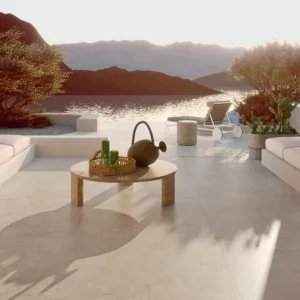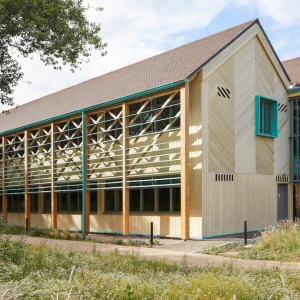Located at Al Souk Al Kabeer area in Bur Dubai, Al Fahidi Market has adopted 67 green building code regulations set out by Dubai Municipality out of a total of 79. It is expected to save a total of 45% of energy per day.
Spread over an area of 27,000 square metres, the building combines traditional and modern architecture and evokes memories of Souq Naif in Deira. The building consists of a basement, ground floor and first floor and is expected to house 232 shops, 15 cafeterias and 32 kiosks, in addition to other public services such as toilets, children’s play areas and prayer rooms. One supermarket and restaurant would be featured on the top floor. A 309-car parking area is also expected to be featured, where 5% of the space is expected to be assigned solely to hybrid cars.
Al Fahidi Market has been built to save water and energy resources. The building features various solar panels on its roof and utilises solar water heating systems, which are expected to lead up to 45% savings in energy and 20% in water on a daily basis. The building’s design has used glass façade only for aesthetic purposes, and as a skylight which enables infiltration of natural light throughout the day.
The building will not employ traditional water heaters as hot and cold water can be accessed through the 33 solar water heaters that can reach temperatures between 70 and 90 degrees Celsius. Each solar water heater has a total capacity of 300 litres, with each saving 256 kilowatts – an equivalent of saving 72% of total energy per day. During winter, the solar water heating system will heat the water during the day. Electrical heating elements utilised at the building will serve as a backup system to heat water during the night.
The facility will also use a system to reuse the collected condensate water from air-conditioning units that is connected to a holding tank, and then to a booster pump, in order to use the water supply for toilets’ flushes. A notable element is the Fresh Air Handling Unit (FAHU) and Air Handling Unit (AHU), which recovers between 30% and 40% of energy through its speed motors and heat wheel energy recovery system.





